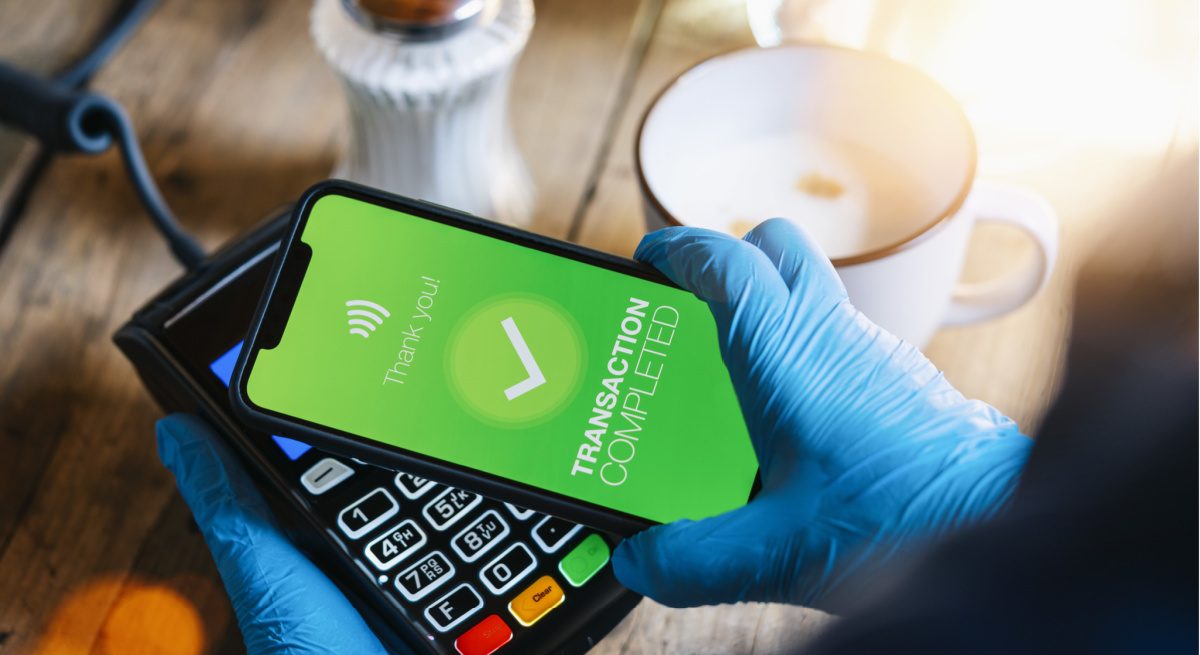How Can Restaurants Harness Technology to Combat COVID-19?
5 Min Read By Tom Riccio
As the economy struggles to reopen amidst COVID-19 – including restaurants across the U.S. – we are seeing starts, stops and uncertainty about how disruptive the pandemic will continue to be. In regions where the number of new cases has dropped, restaurant patrons may experience “fatigue” regarding strict safeguards and social distancing when trying to enjoy a meal out. But the news cycle has demonstrated that one day’s positive outlook is countered with dire reports of additional cases the next – with consumers jolted back to compliance with safety recommendations.
Until the pandemic is in the rear-view mirror, restaurants will be expected to maintain a high level of wellness best practices.
That consumers are extremely concerned about staying safe is confirmed by a recent survey of 8,511 restaurant customers nationwide by VIPinsiders. Sixty-two percent of respondents said both masks and gloves are important restaurant health measures for them to consider returning to indoor dining. Fifty-nine percent rated disposable, single-use menus important and 54 percent indicated restaurants should check the temperatures of staff and guests.
Until the pandemic is in the rear-view mirror, restaurants will be expected to maintain a high level of wellness best practices. Even as vaccines and more treatments become available, the food service industry – and many other sectors – will need to make heightened safety measures permanent to meet customers’ expectations and cultivate ongoing trust. Those that don’t use this opportunity to differentiate their brand to stand for health and well-being for the long-term risk losing customers at the first sign of the next disease threat. Brands that go the extra mile now on safeguards will survive this crisis far better than those that do the minimum, hoping the situation is an anomaly.
In addition to basic hygiene procedures and PPE, which are table stakes, 73 percent of diners say their experience is improved by restaurant technology, according to data from Deputy. Numerous advances that were being quietly tested in the restaurant environment got fast-tracked when COVID-19 hit. As technology ramps up against health threats, we can expect innovations that enable greater protection and operating efficiencies.
Touchless Orders and Payments Cut Down Contact
Reusable menus will likely become a thing of the past and even single-use ones will be the exception. The adoption of traditional customer kiosks and current-state tablets from waitstaff has slowed since they do not eliminate contact and exposure to germs. But, establishments can add anti-microbial screens as a fix for this moving forward.
We’re also entering an age of “bring your own device” to the restaurant. Shelter in place orders during the pandemic set the stage for new customer behavior at the table: browse through menus on your personal smartphone or tablet, place your order from those devices and pay for your meal. Electronic payments like Apple Pay and Google Pay are already household names with more options on the way. Consumers of all ages will increasingly use them to avoid handling credit cards or cash – and combat coronavirus as well as other germs.
Automation Is Becoming More Pervasive
Increasingly, automation is expanding from back office tasks to the kitchen and beyond. For example, we’re seeing more video screens in kitchens to improve order accuracy in casual and fine restaurants, not just quick-service establishments.
With the pandemic an ongoing threat, people are more tolerant of new technology – including robots. In some early adapter restaurants, like Dadawan in The Netherlands, themed robots greet customers, check temps and seat guests. With human staff taking over for ordering, the bots also pitch in with serving and clearing. While many people disdain “machines” for reducing personal interaction and sabotaging jobs, their use can be an effective cost-saving strategy for routine tasks so staff can concentrate on what they love – creating great food and delighting customers.
Another challenge is consumers’ desire for food and beverage experiences while protecting against unsafe contact. Think of the ubiquitous love for a barista-quality cappuccino or flat white. Enter Briggo’s Coffee Robot, which enables customers to order their favorite coffee on their phone, receive a text and pick up their drink – all with no human exchange. Its output of 100 orders per hour with no costs for labor make it well-suited for the company’s partnerships with Whole Foods and airports. With “contactless” experiences arguably here to stay, this concept can be applied to more demands.
And what about food created by 3D printers? First investigated by NASA in 2006, experts have since been documenting safety protocols and developing food applications for this technology. While it will take time for 3D food production to gain broad adoption, it is appearing on the restaurant scene with processes to make pizza, pasta and fancy desserts, with the aim of freeing up kitchen staff and boosting profit margins.
Takeout Takes Off
With people concerned about dine-in risk, online and curbside deliveries have major appeal, especially with onsite options limited or entirely unavailable.
In a recent Statista survey of U.S. consumers, 42 percent of respondents said that if confined to their homes during the coronavirus, they were likely to purchase restaurant food delivery online.
With the pandemic an ongoing threat, people are more tolerant of new technology.
Establishments that previously relied on in-house revenue had to pivot overnight or risk shutting down. This change heightened the search for new transportation solutions since third-party delivery platforms can bump up a customer’s meal cost by 90 percent.
The Jetson era may be just around the corner, if not here already – with robots and autonomous vehicles that can offer good hygiene, speed and lower delivery costs Autonomous driving technology could benefit with new applications from the restaurant industry as ride sharing plummets, and the thriving takeout business fills the gap. We’re also seeing a range of innovative food delivery robots enter the scene, such as the Rev-1, developed by two University of Michigan researchers, inspired by human bike messengers. While robot technology is inspiring, it’s still evolving to support large scale implementation.
Prevention Wins the Day
At the end of the day, it’s all about prevention during a pandemic. In addition to familiar safety steps, temperature checks are rated a top precaution by medical experts to help stem virus spikes.
Deluxe, for example, is evaluating the potential of infrared mirrors that can discreetly monitor the temperatures of guests and alert management if there appears to be a sick person in the establishment. This is a much less intrusive process than checking the temperature of everybody who walks through the door.
Another safeguard is the increased use of AI cameras. Their application has expanded beyond quality control to safeguarding establishments by checking if staff are compliant with wearing facemasks, gloves and sanitizing workspaces. The restaurant can set its own specific parameters and manage the findings with employees. Such measures are yet another assurance to customers that safety is a top priority and proper cleanliness procedures have been followed.
As restaurants move through COVID-19, it’s not about going back to how things used to be, it’s about reimagining better ways to move forward. By harnessing technology, we can enable consumers to enjoy the great American pastime of dining out and protect the experience of excellent food and social interaction.


